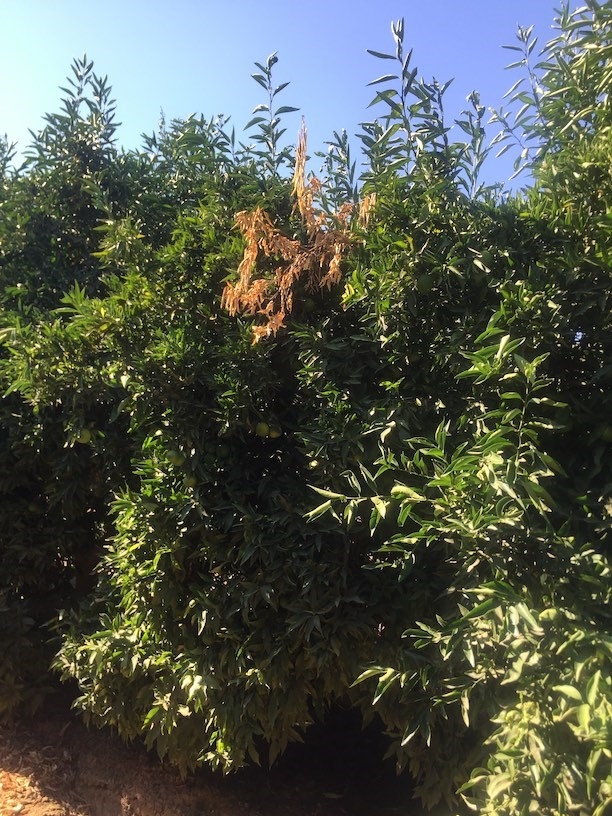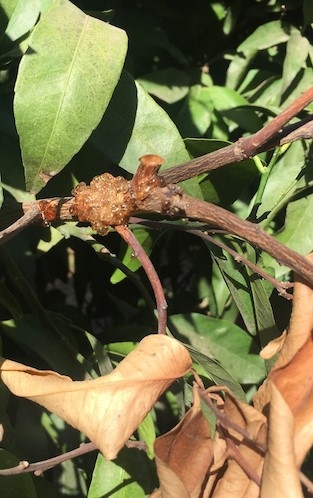|
Figure 1: Citrus shoot dieback (top) and gummosis (bottom) caused by Colletrotrichum. |
A new disease of citrus has been found in the main growing regions of the Central Valley of California. The causal agents of this disease were identified as species of Colletotrichum, which are well-known pathogens of citrus and other crops causing anthracnose diseases. Several growers and nurserymen in various orchards in the Central Valley first noticed the disease in 2013. Symptoms include leaf chlorosis, crown thinning, gumming on twigs and shoots dieback, and in severe cases, death of young trees. The most characteristic symptoms of this disease are the gum pockets, which appear on young shoots either alone or in clusters and the dieback of twigs and shoots (Fig.1). Field observations indicate that symptoms initially appear during the early summer months and continue to express until the early fall. These symptoms were primarily reported from clementine, mandarin, and navel orange varieties. In order to determine the main cause of this disease, field surveys were conducted in several orchards throughout the Central Valley. Isolations from symptomatic plant samples frequently yielded Colletotrichum species. Morphological and molecular phylogenetic studies allowed the identification of two distinct species of Colletotrichum (Colletotrichum karstii and Colletotrichum gloeosporioides) associated with twig and shoot dieback. Interestingly, these Colletotrichum species were also isolated from cankers in larger branches. Although C. gloeosporioides is known to cause anthracnose on citrus, a post-harvest disease causing fruit decay, it has not been reported to cause shoot dieback of citrus. C. karstii however has not been reported previously from citrus in California and our research team is currently conducting field and green house studies to determine the pathogenicity of this species in citrus. At present, it is unclear how widespread this disease is in California orchards or how many citrus varieties are susceptible to this disease. Pest control advisors are monitoring citrus trees for the presence of the disease in the Central Valley (particularly clementine, mandarin, and navel varieties) during the early summer months. Continuing research led by Dr. Akif Eskalen in collaboration with Dr. Florent Trouillas is focused on further understanding the biology of the fungal pathogens as well as factors influencing disease expression in order to develop management strategies against this emerging disease.

